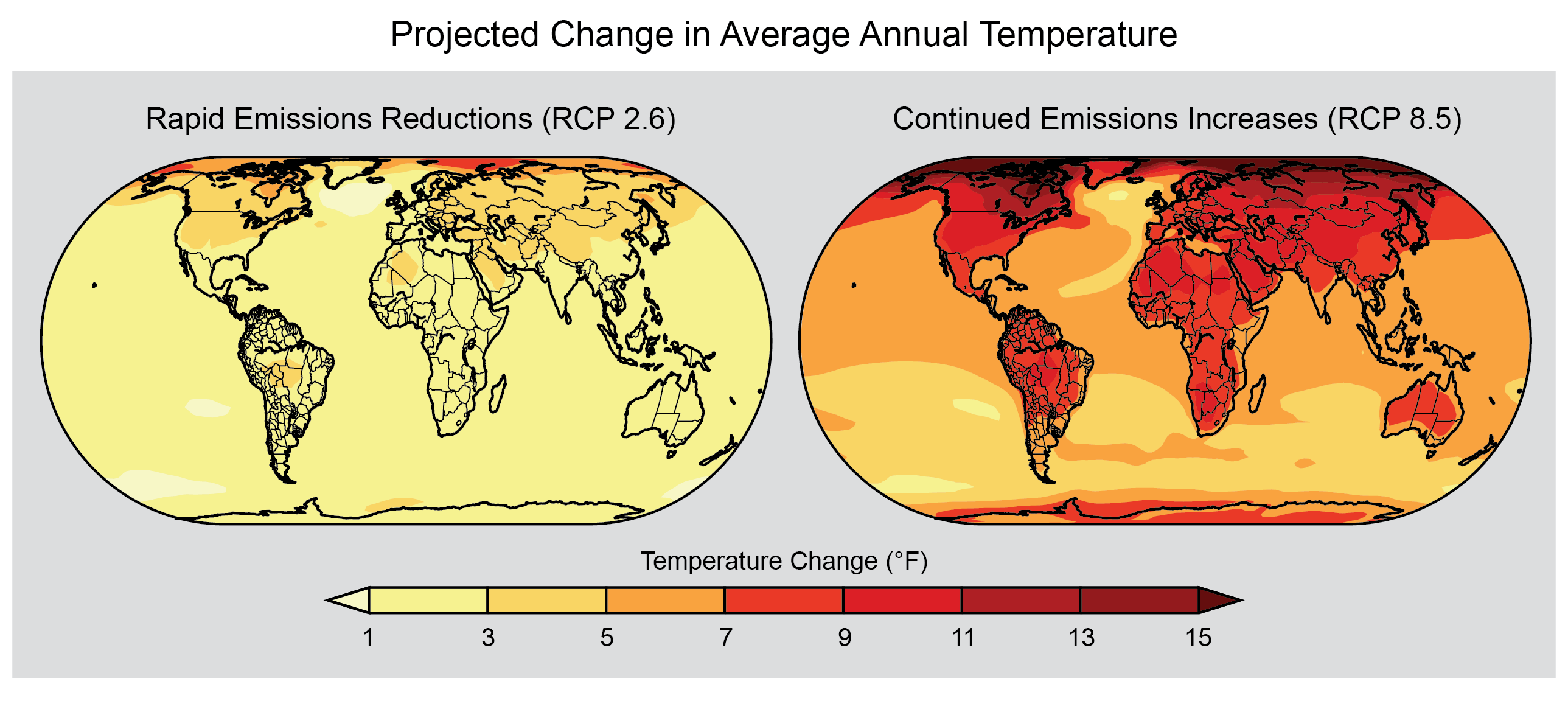Will we still have winter?
Climate change does not mean an end to cold weather. Instead, averaged over many decades, cold winters and mild summers will become less frequent, and mild winters and hot summers will be more frequent. Similarly, a baseball batter who takes steroids has a higher chance of hitting more home runs in a season than they did before taking steroids. Just as the batter can still strike out occasionally, the climate system has more extremely hot days over decades, but can still produce very cold days occasionally.
In fact, these trends have been observed. In the first half of the 20th century, there was an even split between the number of record cold days and record hot days. In recent decades , though, hot records continue to be broken while cold records almost never are. It is very likely that the number of cold days and nights has decreased and the number of warm days and nights has increased on the global scale (IPCC AR5, Synthesis for Policymakers).
It is also important to remember that a cold winter in one location can still happen while the global average temperature is increasing. A cold winter in one place doesn’t mean a cold winter everywhere.
Won’t some parts of the world benefit from climate change?
There are some benefits that come with warming and higher atmospheric carbon dioxide levels:
- Energy demands for heating usually decrease
- Carbon dioxide can accelerate growth in some types of crops
- Growing seasons get longer, which may increase agricultural production
- Illness and mortality related to cold decline
However, most studies show that damages caused by climate change far outweigh these benefits. Work supporting the Risky Business report shows that in almost all regions of the United States, warming has more downsides than benefits.
According to the National Climate Assessment and the IPCC Assessment 2014 Report: Impacts, Adaptation, and Vulnerability, potential harm to individuals, communities, and businesses includes threats to:
- Coasts – In the near-term, sea-level rise increases storm surge, making hurricanes and other severe storms more destructive. It may also contaminate groundwater supplies with saltwater. In the longer term, many coastal communities may become inundated, forcing choices about investing in shoreline protection and/or moving farther inland. For people who live in small island nations, where higher ground may be limited, resettlement in new countries may be necessary.
- Water resources – Water may become less available because of changes in precipitation patterns, loss of snowpack, and earlier snowmelt. Warmer temperatures can drive up water demands for agriculture, energy, and human consumption. Flooding from heavier rainfall events can also potentially overcome wastewater treatment systems and spread agricultural runoff into water bodies.
- Health – Warmer temperatures can increase the risks of heat-related illness and even death. Warmer temperatures can also help expand the ranges of diseases carried by insects or ticks, bringing them to regions where they were previously not a threat. Warmer temperatures can increase smog, reducing air quality and causing health issues for the young, elderly, and those with respiratory problems.
- Security – Climate change can affect access to basic needs (food, water, energy, shelter), especially in developing countries. Impacts on these critical resources can trigger or exacerbate migration, conflict, and political instability, which have security implications for the United States. In addition, loss of Arctic sea ice presents new operational issues for the U.S. Navy and for the security of our Arctic border.
How reliable are climate projections?
Resources on climate models and projections can be found at the National Academy of Sciences. They also have a helpful interactive graphic that shows how climate models are created, tested, and used to determine how our climate will continue to change in the future.
Current computer models can faithfully simulate many of the important aspects of the global climate system, such as changes in global average temperature over many decades; the march of the seasons on large spatial scales; and how the climate responds to large-scale forcing, like a major volcanic eruption. We can be confident that climate models correctly represent some of the “big picture” features of climate, though simulations of climate at more regional and local scales have greater uncertainty. However, the largest source of uncertainty in our future climate beyond the next few decades is future greenhouse gas emissions.
The models used to simulate our future climate use different greenhouse gas emissions scenarios to reveal a range of possible future climates. If we emit a particular level of greenhouse gases in the coming decades, the projection best matching these emissions provides us a glimpse of how different our climate is likely to be.
How much do greenhouse gas emissions have to be reduced to stop climate change?
According to the IPCC, we need to keep global warming to under 1.5°C to avoid most of the dangerous impacts of warming. In order to hit this target, annual emissions need to be reduced, and by the end of the century there needs to be net removal of greenhouse gases from the atmosphere. The longer we wait to reduce greenhouse gas emissions, the more drastic reductions we will need to make to minimize warming.
While greenhouse gases continue to accumulate in the atmosphere, the climate will warm. And even if we stabilized the concentrations of greenhouse gases in the atmosphere, the planet will continue to warm for many decades, as time lags within the climate system are relatively long.
It can be most useful to think about climate change through a risk management lens – the more greenhouse gases that we emit, the greater the risks for dangerous impacts to occur. Through this lens, reducing emissions helps lower our risks, and the greater the reductions, the greater the risk avoided.

